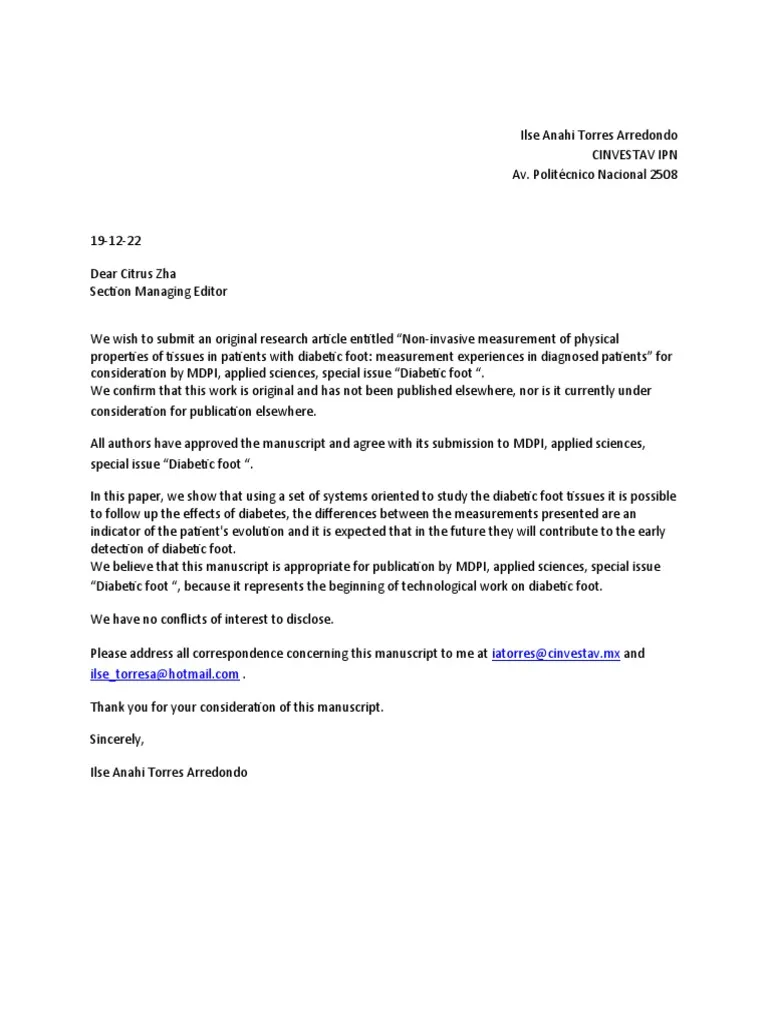Understanding the Example Cover Letter
An example cover letter serves as a crucial template and guide for crafting your own job application materials. It demonstrates the best practices for communicating your qualifications, skills, and enthusiasm to a potential employer. Analyzing a well-written example helps you understand the structure, tone, and content needed to make a positive impression. Think of it as a blueprint, providing a clear framework to follow when writing your own cover letter. This approach ensures you address the essential elements required by most employers and increase your chances of securing an interview.
Key Components of an Example Cover Letter
A compelling example cover letter usually includes several key components. First, clear contact information, including your name, address, phone number, and email, is essential. Following this, a professional greeting tailored to the hiring manager or company sets the right tone. The opening paragraph should immediately grab the reader’s attention by stating the position you’re applying for and briefly explaining why you are interested. Subsequent sections should highlight your skills, experience, and how they align with the job requirements. Throughout the letter, it is vital to demonstrate your understanding of the company’s needs and tailor your message to fit. Finally, a strong closing and a formal signature solidify the impression.
Contact Information
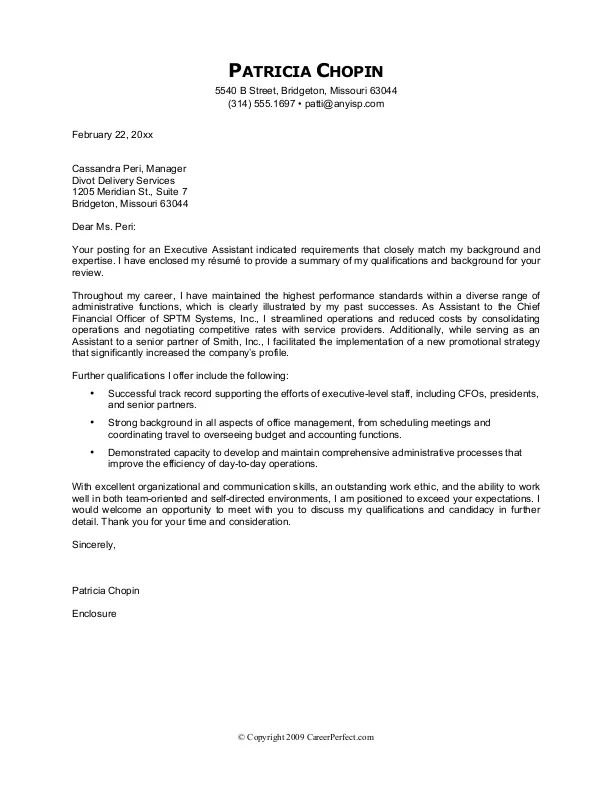
At the top of your example cover letter, you should place your contact information. This includes your full name, address, phone number, and professional email address. Ensure the email address is appropriate and professional. Avoid using nicknames or unprofessional language. This allows the recruiter to quickly and easily contact you. Double-check that all information is accurate and up-to-date to prevent any communication issues. Proper presentation of your contact details establishes a professional first impression.
Professional Greeting
Your cover letter should begin with a professional greeting. When possible, address the letter to a specific person, such as the hiring manager. Researching the company’s website or LinkedIn can help you find the right name. If a specific contact person is not available, using a general greeting like “Dear Hiring Manager” is acceptable. The greeting sets the tone of your letter and shows that you are taking the initiative to personalize your application. This personalized approach immediately improves the overall effectiveness of your cover letter.
Opening Paragraph that Grabs Attention
The opening paragraph of your example cover letter should immediately capture the reader’s attention. Start by clearly stating the position you are applying for. Then, quickly mention where you saw the job posting and what initially drew you to it. Briefly highlight your interest in the role and the company, expressing why you believe your skills and experience align perfectly. A strong opening sets the stage for the rest of your letter and encourages the reader to continue reading. Keep it concise and focus on key takeaways.
Highlighting Skills and Experience
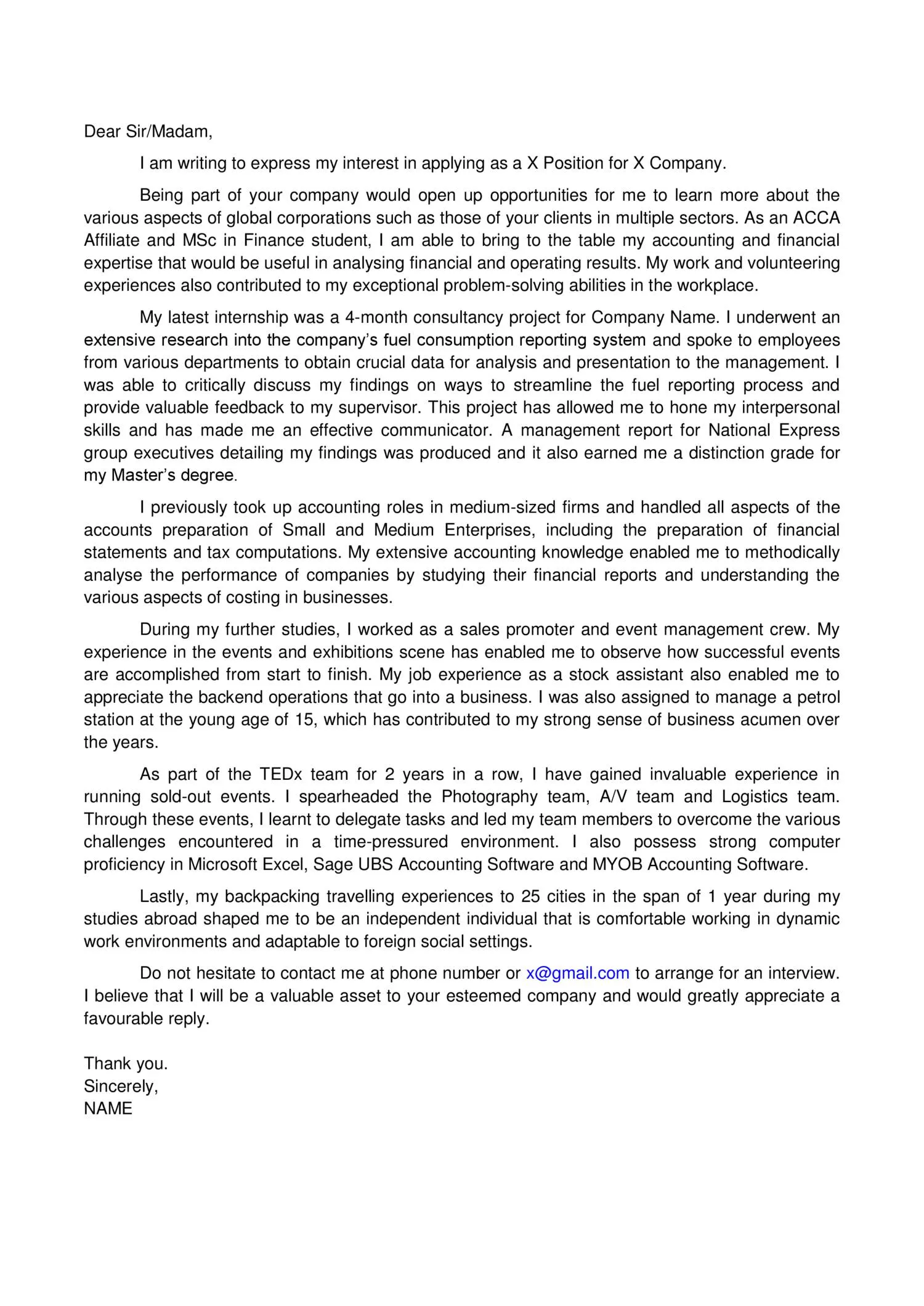
In the main body of your example cover letter, carefully highlight the skills and experiences most relevant to the job requirements. Review the job description closely and identify the key skills and qualifications the employer seeks. Provide concrete examples of how you have demonstrated these skills in previous roles or projects. This could include specific accomplishments, projects completed, or quantifiable results. Use action verbs to describe your contributions and achievements. Showing rather than simply telling the employer about your skills is essential in making a persuasive case for why you are an ideal candidate. Be specific and provide tangible evidence.
Tailoring the Letter to the Job
One of the most crucial steps is tailoring your example cover letter to each job application. Avoid using a generic cover letter for every position. Instead, carefully review the job description and customize the content to align with the specific requirements. Highlight the skills and experiences that match those listed by the employer. Demonstrate your understanding of the company’s needs and how your skills can contribute to its success. This approach shows that you have taken the time to research the company and are genuinely interested in the opportunity. Make every cover letter as specific and relevant as possible.
Quantifying Achievements
When describing your achievements in your example cover letter, always quantify your accomplishments whenever possible. Use numbers, percentages, and specific data to illustrate the impact of your work. For example, instead of saying you “increased sales,” state that you “increased sales by 15% in one quarter.” Quantifying your achievements provides concrete evidence of your abilities and adds credibility to your claims. It shows employers the tangible results you have produced in previous roles. This approach makes your cover letter more impactful and demonstrates your value to potential employers.
Expressing Enthusiasm and Fit
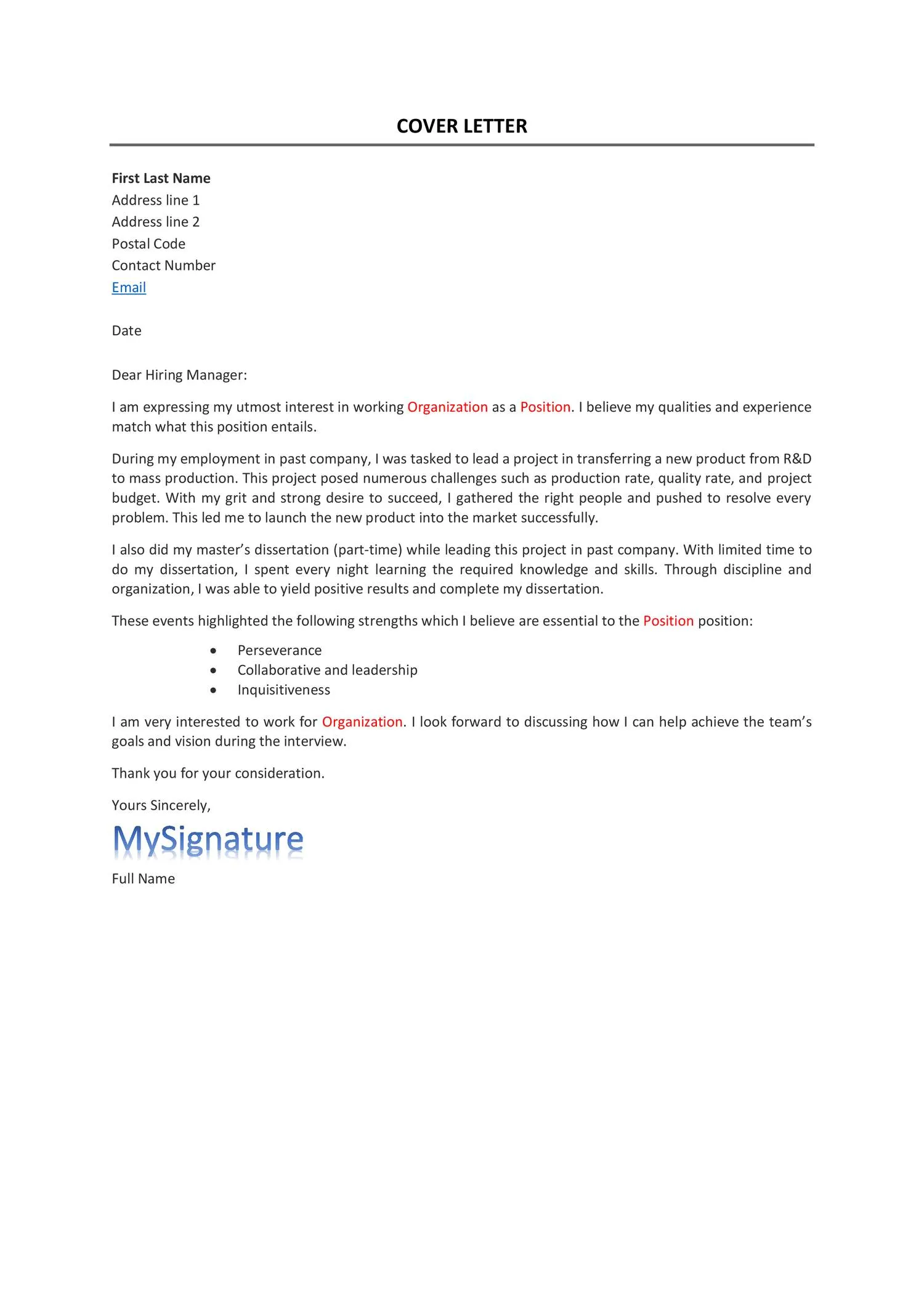
Show your enthusiasm for the opportunity and your fit with the company. Express your interest in the specific role and explain why you are excited about the company. Explain how your values and career goals align with the company’s mission and culture. Research the company culture and mention what resonates with you. This shows that you have taken the initiative to learn about the organization and are genuinely interested in the position. Making a genuine connection with the employer enhances your chances of moving forward in the application process.
Closing the Cover Letter Effectively
Conclude your example cover letter with a strong and effective closing. Reiterate your interest in the position and your enthusiasm for the opportunity. Summarize your key qualifications and reiterate how your skills and experience make you a good fit for the role. Thank the hiring manager for their time and consideration, and express your eagerness to discuss your qualifications further in an interview. Make sure your closing paragraph is concise and leaves a lasting positive impression, encouraging them to contact you.
Formal Closing and Signature
The formal closing and signature are the final elements of your example cover letter. Use a professional closing such as “Sincerely,” “Best regards,” or “Respectfully.” Leave space for your signature below the closing if you are sending a printed letter. If you are submitting an electronic version, type your full name. Ensure your name is clearly visible and easy to read. This final step maintains the professional tone throughout the entire letter and provides a polished appearance. It signifies the completion of your application and shows respect to the recipient.
Formatting and Layout Best Practices
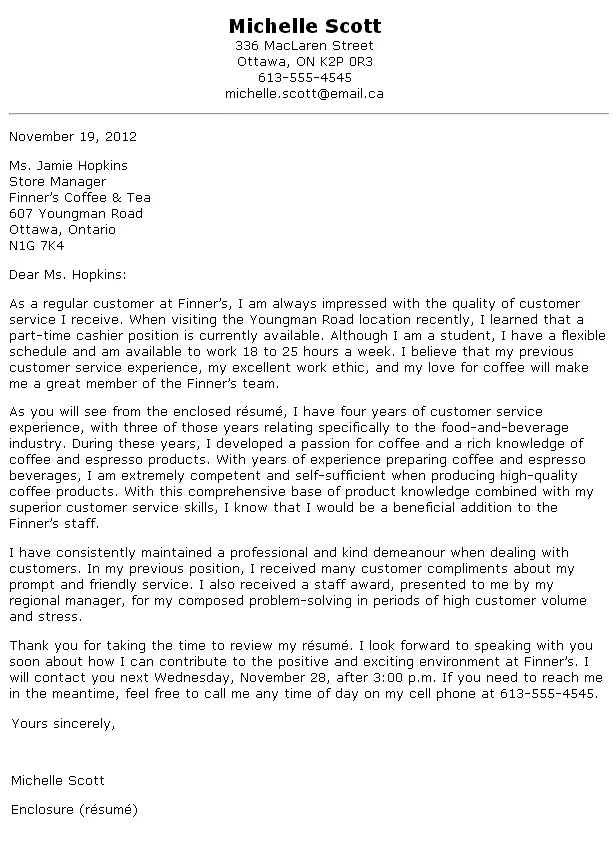
Adhering to formatting and layout best practices is crucial for presenting your example cover letter in a professional manner. Use a standard font, such as Times New Roman or Arial, in a readable size (11 or 12 points). Maintain consistent margins, usually one inch on all sides. Use single-spacing within paragraphs and double-spacing between paragraphs. Use clear headings and bullet points to break up large blocks of text and make the letter easier to read. The layout should be visually appealing and easy to scan. A well-formatted letter demonstrates attention to detail and respect for the reader’s time, thus increasing its effectiveness.
Proofreading and Editing Checklist
Before submitting your example cover letter, perform a thorough proofreading and editing process. Check for any grammatical errors, spelling mistakes, and punctuation errors. Ensure that the language is clear, concise, and free of jargon or slang. Verify that your contact information is accurate and up-to-date. Confirm that the letter is tailored to the specific job and company. Ask a friend or colleague to review your cover letter for a second opinion. This final step ensures that your letter is polished and professional, presenting you in the best possible light. A flawless cover letter significantly increases your chances of making a strong first impression and getting the job.
